
Manufacturer's Specifications:
Signal Format: NTSC TV standard.
Coding Format: EIAJ standard (14-bit) or 16-bit format
Sampling Frequency: 44.056 kHz.
Quantization: 14- or 16-bit linear PCM.
Frequency Response: 10 Hz to 20 kHz, -±0.5 dB.
Harmonic Distortion: 14-bit mode, less than 0.01 %: 16-bit mode, less than 0.007%.
Dynamic Range: 14-bit mode, more than 86 dB: 16-bit mode, 90 dB.
Wow and Flutter: Below measurable limits
Input Sensitivity, 0-dB Record Level:
Mike, 0.435 mV; line, 95 mV; video composite during playback, 1.0 V p-p.
Line Output Level: 95 mV.
Video Output Level: 1.0 V p-p.
Copy Output Level: 1 V p-p.
Headphone Output Level: Variable, from 50 to 775 mV.
Power Consumption: 17 W d.c.
Dimensions: PCM-F1, 8.46 in. (21.49 cm) W x 3.15 in. (8.0 cm) H x 12 in. (30.48 cm) D.; power supply Model AC-700, 4.2 in. (10.67 cm) W x 3.15 in. (8.0 cm) H x 12 in. (30.48 cm) D.
Weight: PCM-F1, 8.8 lbs. (3.96 kg); power supply Model AC-700, 6.6 lbs. (2.97 kg).
Price: PCM F-1, including a.c. power supply but not including portable VCR, $1,900.00.
When I spent several "kilobucks" just over a year ago for my latest tape and tape deck tester from Sound Technology, little did I suspect that I would run into a tape recording system that would surpass my lab measurement capabilities so soon. But that's exactly what happened to me during these past weeks as I encountered Sony's third-generation PCM digital audio processor --an incredibly small unit that's styled very much like that company's newest portable videocassette recorder, the Model SL-2000, which I used as the tape-transport system in my tests of the audio capabilities of the new PCM adaptor. Long-term readers of Audio may remember that we tested the very first PCM adaptor made by Sony (Model PCM-1) more than two years ago. That device was superseded by the PCM-10 shortly thereafter, largely as a result of a Japanese industry (EIAJ) standard having been developed and approved for such video-related PCM audio processors and of Sony's desire to conform to those standards.
The new digital processor, PCM-F1, tested here, features two high-performance ICs recently developed and now being mass produced by Sony: The CX-889 A/D (analog-to-digital) converter and the CX-890 D/A converter, which is also the LSI to be used in Sony's compact disc player. (A compact disc is shown on the cover with the PCM-F1.) Until the development of these new ICs, monolithic chips of this type and complexity were difficult to produce, and the yield was very low. Sony's success in producing these devices at lower cost is part of the reason for the relatively low cost of this new PCM processor. (The Older PCM-1 and the later PCM-10 both carried suggested retail prices of around $5000.00 in this country!) The PCM-F1 also incorporates three new LSIs (one for re cording and two for playback) which process digital signals, per forming the encoder, sync-separator and decoder functions shown in the block diagram of Fig. 1. The new LSIs were developed jointly by Sony, Sanyo and Toshiba in early 1981, replacing hundreds of ICs previously used in earlier digital processing circuitry. It is the use of these and other ICs that has made possible reduction in the volume and weight of the new PCM-F1.
By way of comparison, the PCM-F1 is one-eighth the volume of the PCM-10 and one-fifth the weight; best of all, it sells for about one-third the price.
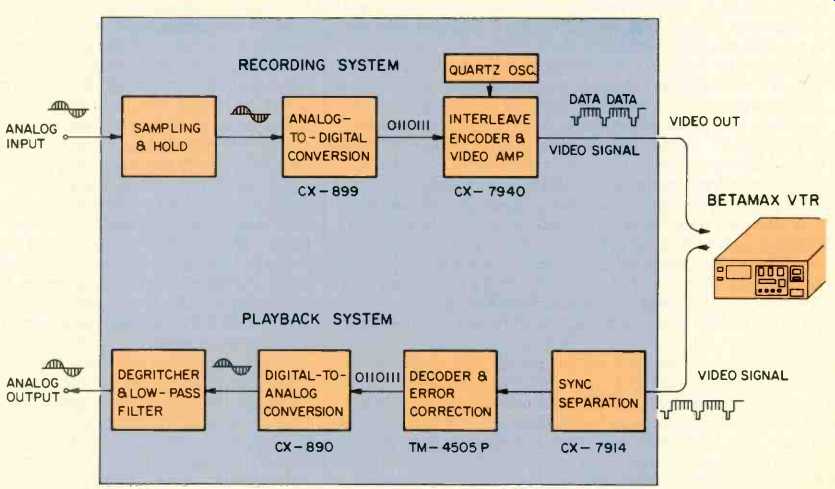
Fig. 1 --PCM audio processor, block diagram.

Fig. 2 --Digital audio PCM system connections.
A typical hook-up for the PCM-F1 is illustrated in Fig. 2. In this diagram, supplied by Sony, the portable VCR shown is the incredibly lightweight, small SL-2000 Betamax unit, and indeed, that VCR makes an ideal companion for the PCM-F1 processor.
However, I am sure that Sony is not implying other VCRs can't be used with the PCM-F1; to prove this, after I was through checking out the PCM-F1 with the Betamax SL-2000 and its companion TT-2000 tuner-timer, I hooked up the PCM-F1 to another VCR which uses the "other" format and the PCM-F1 did just as well. All VCRs in the U.S. must be able to deal with an NTSC TV signal format, and that's what the video output jack of the PCM-F1 supplies. I am sure it would work well even with the third VCR tape format --the one that uses 1/4-inch, smaller videocassettes, in case you just happen to own one of those.
Control Layout
The PCM-F1 can be powered in a variety of ways; for example, you can hook it up via the a.c. power supplied by the Sony TT-2000 tuner-timer. You can operate it from battery power or even from a car battery (us1ng an optional cable). And, as in my case, you can power it from its supplied a.c. power supply, the Model AC-700, in which case the TT-2000 tuner-timer would be available to power the portable SL-2000 VCR which I used first in my tests. If all of that seems very complicated, it isn't --once you have all the pieces in front of you and read the diagrams in the owner's manual.
An enumeration of the front panel controls will aid in appreciating the sophistication of this PCM processor. At the left we find a power on/off switch, and just below are a headphone attenuator switch and headphone jack, by means of which you can monitor material being recorded (during the recording phase) as well as playback. A major portion of the left section of the panel is given over to expanded scale LED record/playback level meters (calibrated from below -50 dB to 0 dB and "over record" indications) for left and right channels. Below these scales are several indicator lights; Mute lights up if the associated VCR is mistracking or skewing tape or if there are excessive dropouts.
Emphasis illuminates automatically for all tapes made or played on the PCM-F1 . Tapes made on other processor/VCR combinations which may not incorporate pre-emphasis for improved S/N and played on this machine will automatically be played without the de-emphasis circuitry, and the Emphasis light will not illuminate for such tapes. Some tapes may have a "copy inhibiting" code included and, if that is the case, the Copy Prohibiting indicator on the front panel will light. Finally, a Tracking light comes on when you adjust the tracking control on the associated VCR.
The right-channel meter scale assists in achieving correct tracking when a Meter button at the right of the panel is depressed to select that function.
Controls along the right section of the front panel include individual left- and right-channel record level controls, a momentary record/mute button, the meter-function selector button, peak-hold and reset buttons for the meters, and a battery-check button. Tiny toggle switches below the touch buttons choose muting on/off, copy on/off and mike/line inputs. Left and right microphone input jacks are located at the lower right corner of the processor. The muting switch is normally left in the On position to guard against possible dropout noise bursts which, if not squelched, could conceivably cause amplifier or speaker dam age. If you are sure of a perfect, dropout-free tape, however, this automatic muting feature can be defeated with the muting switch.
Left- and right-channel audio line-in and line-out jacks are found on the rear panel, along with video in and out jacks (these connect via supplied cables to the VCR being used with the processor), and a Copy Out jack. When the Copy switch on the front panel is activated, an error-corrected signal is available at this output for copying from one digital tape to another. In other words, the signal remains in digital (albeit error-corrected) form at this output jack. Also located on the rear panel is a resolution switch, with positions for 14-bit or 16-bit. I suspect that this is a bit of individuality being exhibited by Sony, whose experience in digital audio processing is extensive. Perhaps what they are trying to tell the rest of the industry is that, despite the fact that the EIAJ-approved standard calls for a 14-bit linear quantization format, Sony's advanced technology permits a finer, 16-bit en code/decode approach for even greater dynamic range and lower distortion. What it all means is that if you should come upon a tape made on any other PCM processor/VCR combination, the PCM-F1 will automatically play it back using the correct EIAJ format. However, in making your own tapes on the PCM-F1 (plus a VCR) you can either use the EIAJ format (if you intend to give tapes to others whose machines may only have EIAJ de coding) or the somewhat superior 16-bit format of which the PCM-F1 is capable. If you opt for 16-bit for your own recordings, you would put the switch in the position that indicates 16-bit recording. Again, in playing back, the position of the switch is not important-the circuitry detects the mode used.
A couple of interesting asides before we get down to the performance specifics of the PCM-F1. Sony recommends that if a Beta format VCR is used with the processor, only Beta I or Beta II speeds should be used. In most cases, that pretty well restricts things to Beta II (only professional Beta-format machines include the Beta I speed). I surmised that if you were to use a VHS VCR with the PCM-F1, that would mean staying with the SP (2-hour) speed, which is what I did when I later tried the PCM-F1 with that alternate type of VCR. Sony also suggests not using anything longer than an L-500 tape package (again, referring to the Beta format). I used L-500, L-250 and L-125 tape packages in my experiments using the SL-2000, and all produced excel lent results. (I followed Sony's advice, and did not try using an L 750, for fear of possible dropouts due to thin base material and thin magnetic coatings.) In my experiments with a VHS VCR, I did try T-90 and T-60 tape packages with perfect results. I also tried a few T-120 tapes and found that a few dropouts did occur with some of these. In this regard, of the T-120s tested, Fuji, TDK, JVC and Maxell videocassettes offered best results. All tapes worked well in the T-90 and T-60 lengths, however.
Measurements
One thing the Sound Technology 1500A audio tester was able to do quite adequately in measuring the performance of the PCM-F1 /VCR combination was to depict record/play frequency response. Note that in Fig. 3, I have expanded the vertical scale so that each division represents only 2 dB of amplitude change (as opposed to my usual presentations which use a scale of 10 dB/division). In Fig. 3A I moved the dotted-line cursor to the point of maximum deviation from flat (it occurred at 6.9 kHz), which turned out to be an insignificant peak of three-tenths of one decibel (+0.3 dB). In Fig. 3 I sought out the greatest deviation from flat response at the low end, and that turned out to be a half decibel (-0.5 dB) at 21 Hz! Note, too, that these measurements were made at "0 dB" record level, as indicated on the PCM-F1's LED metering system. Imagine ever getting results like that from any analog tape recording system at that recording level! Such is the beauty of PCM digital tape recording! Next I tried to measure third-order (D3) harmonic distortion as a function of recording levels; results are depicted in Fig. 4. Note that with the cursor set to reference "0 dB" record level, the third-order distortion reading (in Fig. 4A) is 0.01 %. In fact, it's probably lower than that, but I happen to know that the Sound Technology tape tester has a test signal with about that level of residual distortion. However, Fig. 4B shows us an important les son about all digital (PCM) recording systems: Once you go OVER the maximum permitted recording level (in this case, 0 dB on the PCM-F1's level meters), things get pretty horrible pretty quickly. Expressed in oversimplified terms, there aren't enough "bits" to accommodate such signal amplitudes, so the system encodes with gross levels of error, i.e. distortion. Even as little as a +2 dB of over-recording resulted in third-order distortion levels of 2.8% (Fig. 4A). Had I gone to +3 dB (moving the cursor one more space to the right), we'd intersect a dash-line near the top of the display in Fig. 4A which denotes almost 10% third-order distortion! The lesson, of course, is that even though PCM re cording offers vastly greater dynamic range and vastly improved signal-to-noise ratios, these benefits must be taken at levels from "0 dB downward," and the concept of "headroom above 0 dB" (which we've all become accustomed to in analog tape recorders) no longer applies.
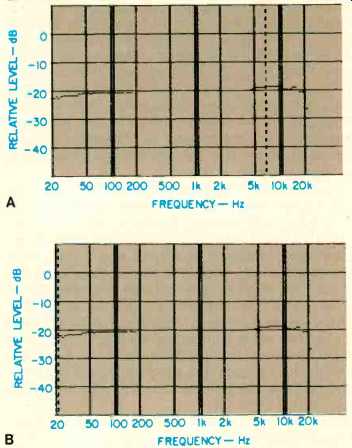
Fig. 3 --Frequency response at 0-dB record level, 14-bit mode, with cursor
set to show "worst case" deviation from flat response at treble
end (A) and bass end of spectrum (B).
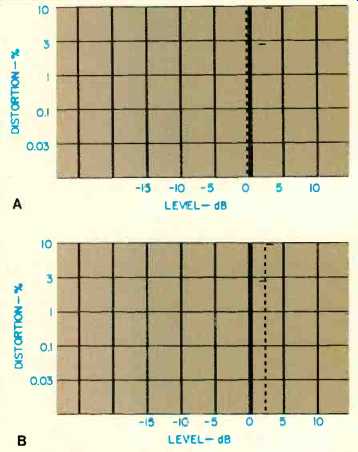
Fig. 4 --At 0-dB record level, distortion is virtually unmeasurable on Sony's
PCM-F1 processor (A), but unlike analog tape recording, 3rd-order HD rises
rapidly when record level maximums are exceeded (2.8% at +2 dB).
I was curious to learn whether operation in the 16-bit mode would provide measurably better performance (not that there was anything that I could possibly criticize in the 14-bit results obtained thus far). So, I repeated the distortion measurement using that alternate quantization format and, sure enough, at the +2 dB (overrecord) level, where I had previously observed a third-order distortion of 2.8%, I now did read a somewhat lower 1.7% (see Fig. 5A). My attempts to detect improvement at other, legal recording levels were again frustrated by the limitations imposed by the test signal provided by the Sound Technology tester. As you can see from Fig. 5B, the best I could read was 0.01 % (even though I'm quite sure that Sony's claim to a some what lower 0.007% is well founded and no doubt substantiated in their labs).
I ran into the same sort of test equipment limitations when I tried to measure signal-to-noise ratios for the PCM-F1 /SL-2000 combination. I thought I was getting a totally accurate reading of 86.1 dB, as displayed in Fig. 6 (and was all set to exclaim "Gotcha!" to Sorry for claiming 90 dB or better in the 16-bit mode), until I disconnected all inputs and outputs to the tester and asked it to measure signal-to-noise ratio (relative to the same previous reference level, of course). As you've probably already guessed, the tester still read-86.1 dB or so. The only reason I'm showing you the video printout of this test is because it's probably the first time you will have ever seen a signal-to noise ratio of any audio tape recording system that exceeds 85 dB and doesn't require any sort of external electronic noise-reduction system! By this time, having become very nearly totally frustrated with my inability to measure the superb performance levels of this PCM recording system, I tried to measure wow and flutter, and the "smart" test machine told me to forget it by explaining that the "signal (is just) too low." So all that remained for me to do was to measure the audio input sensitivities and output levels of the PCM-F1, and all of these turned out to be pretty much as specified.
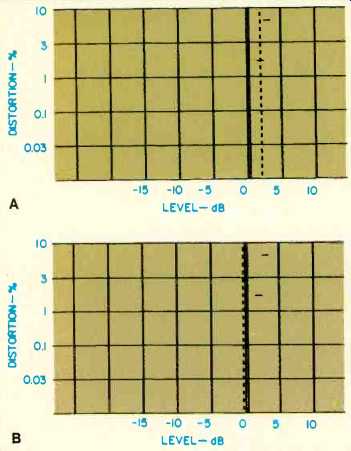
Fig. 5--A slight improvement in 3rd-order harmonic distortion was noted
when 16-bit mode is used on Sony PCM-F1 (A), but so long as recording level
does not exceed 0-dB (B), 3rd-order HD is insignificant in both 14- and 16-bit
modes.
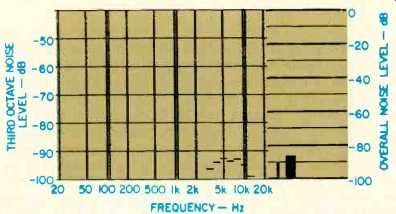
Fig. 6 --Have you ever seen this sort of S/N figure for a "tape recorder" before?
The 86.1 dB (below 0-dB record level) is actually the residual noise of the
test unit!
Use and Listening Tests
Abandoning the lab bench, I was now ready to try my hand at some actual PCM stereo recording. I was, as in previous PCM recording experiments, immediately confronted with the problem of finding source material that would be good enough to "show off" the capabilities of this magnificent recording system.
My editor summarily dismissed my request that he send a 50-piece orchestra to my home so that I could record some wide-dynamic-range live music. Nor was I afforded special permission to set up this equipment at one of the more prestigious concert halls in New York City. That left only two possible alternatives;
first, I sang my heart out, using one of my better microphones (one I normally use for calibration purposes). When I played back my own performance, it was clear that PCM digital recording is the sound source of the future. No background hiss! Not a bit of pitch wavering (other than the natural kind inherent in all good voices) and no added distortion that was discernible. The re corded songs were limited strictly by the quality of the mike, the amplifiers used, the speakers, and --of course --the performance itself!
On to my second experiment! As in previous tests of earlier PCM processors, I resorted to dbx-encoded discs. By first de coding them and using the expanded, decoded results as source material to be recorded in digital form using the Sony PCM-F1/VCR combination, I would have a variety of musical source material with enough dynamic range and with inaudibly low record surface noise so that I could judge the quality of the PCM recording process. Since I have a rather large collection of dbx-encoded discs, I must confess that I am still engaged in this process. From what I've heard so far (and this setup makes for an easy form of direct A-B comparison between the decoded dbx disc played back directly and the PCM-recorded version of the same decoded disc material), I can say with absolute certainty that I can hear no difference whatsoever between these two forms of the same program source. This suggests that the PCM F1 is neither adding nor subtracting anything that is audible to this listener. Of course, the experiments may take several more weeks to complete. During that time I will absolutely have to hang on to the PCM-F1, the Sony SL-2000 VCR, and the companion TT-2000 tuner-timer and a.c. adaptors. I hope Sony isn't in too much of a hurry to get them back. It's for the benefit of science after all!
-Leonard Feldman
(adapted from Audio magazine, Mar. 1983)
Also see:
Sony PCM-1 Audio Unit (Mar. 1980)
Sony PCM-701 Digital Audio Processor (Apr. 1983)
SONY PCM-501 ES Digital Audio Processor (Sept. 1985)
= = = =